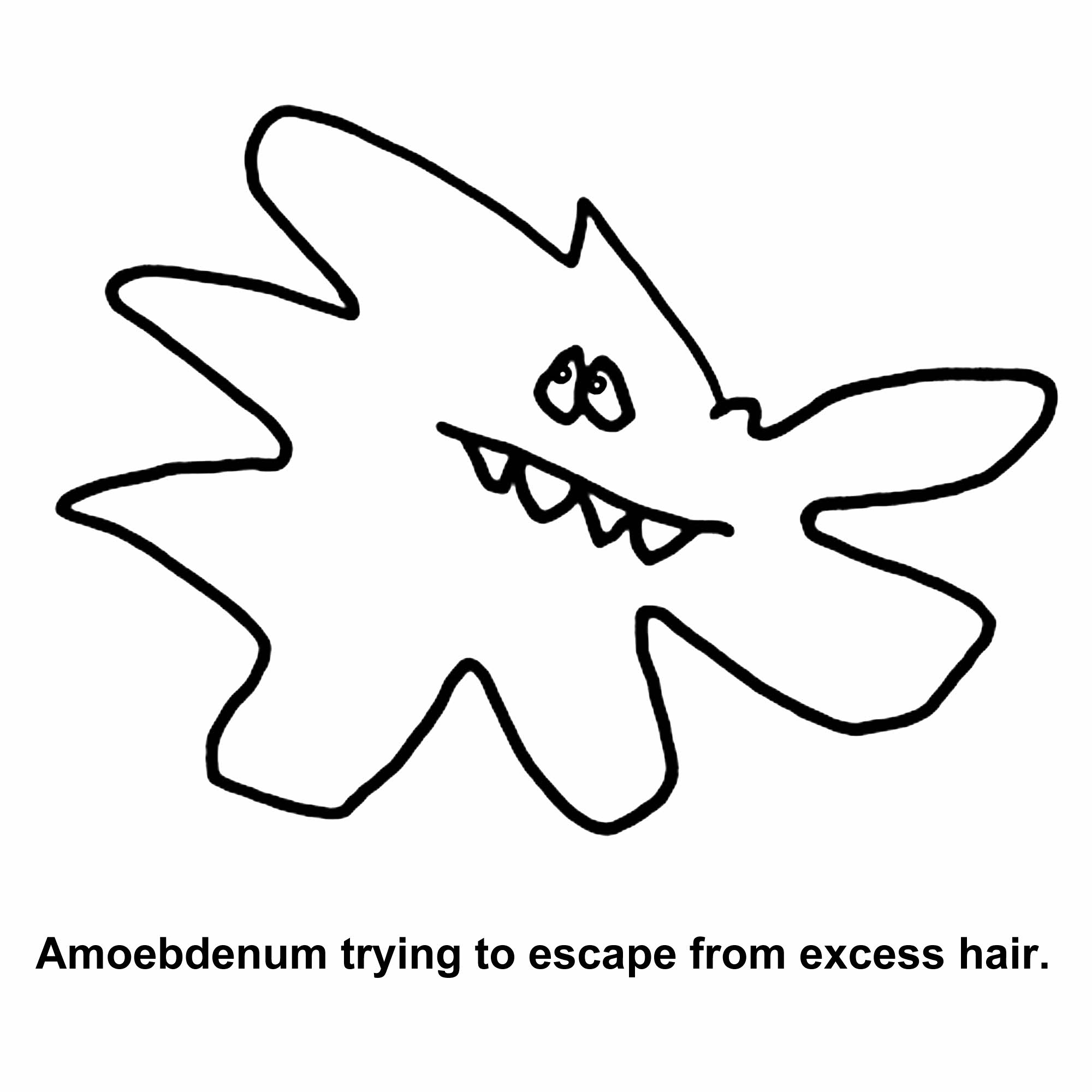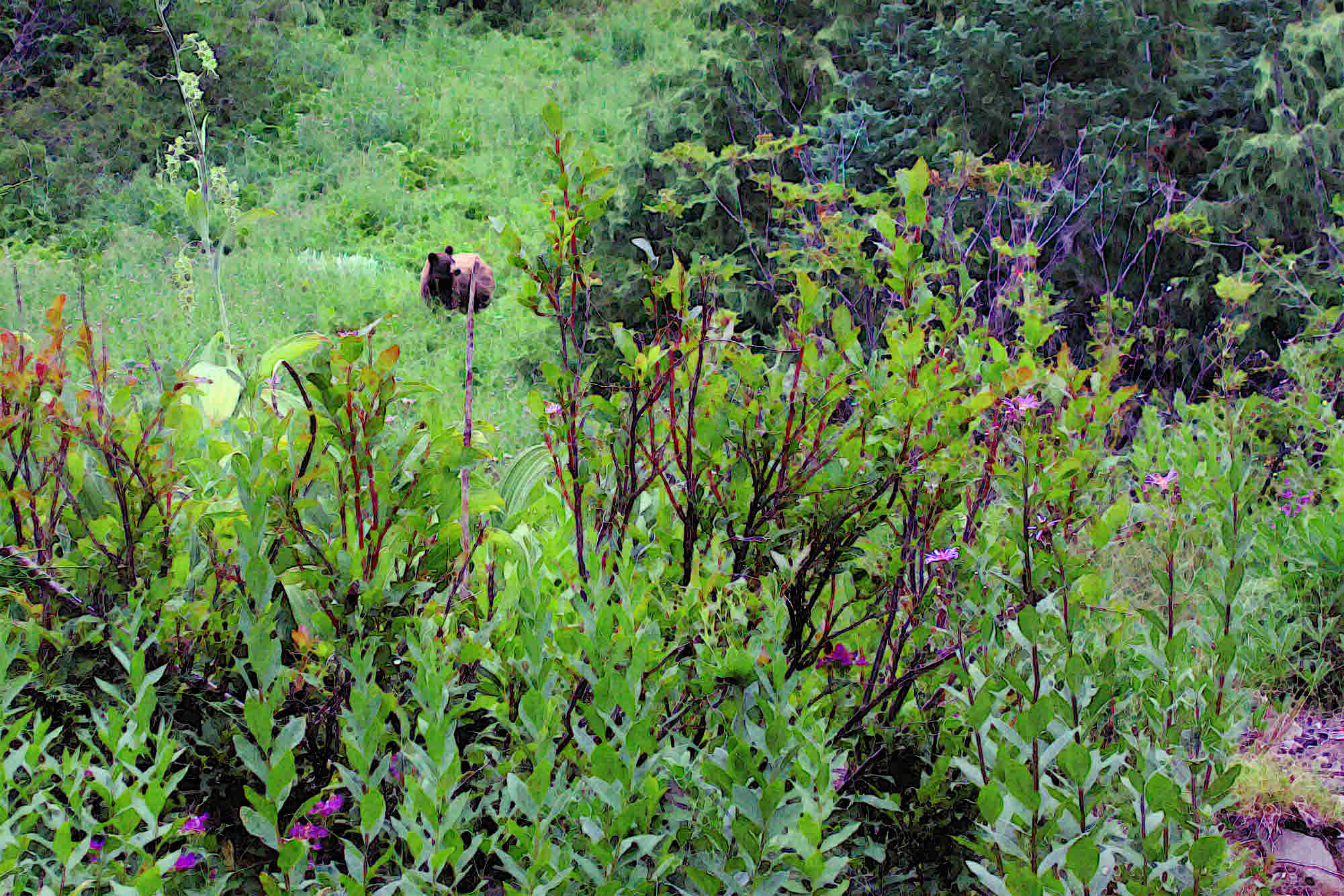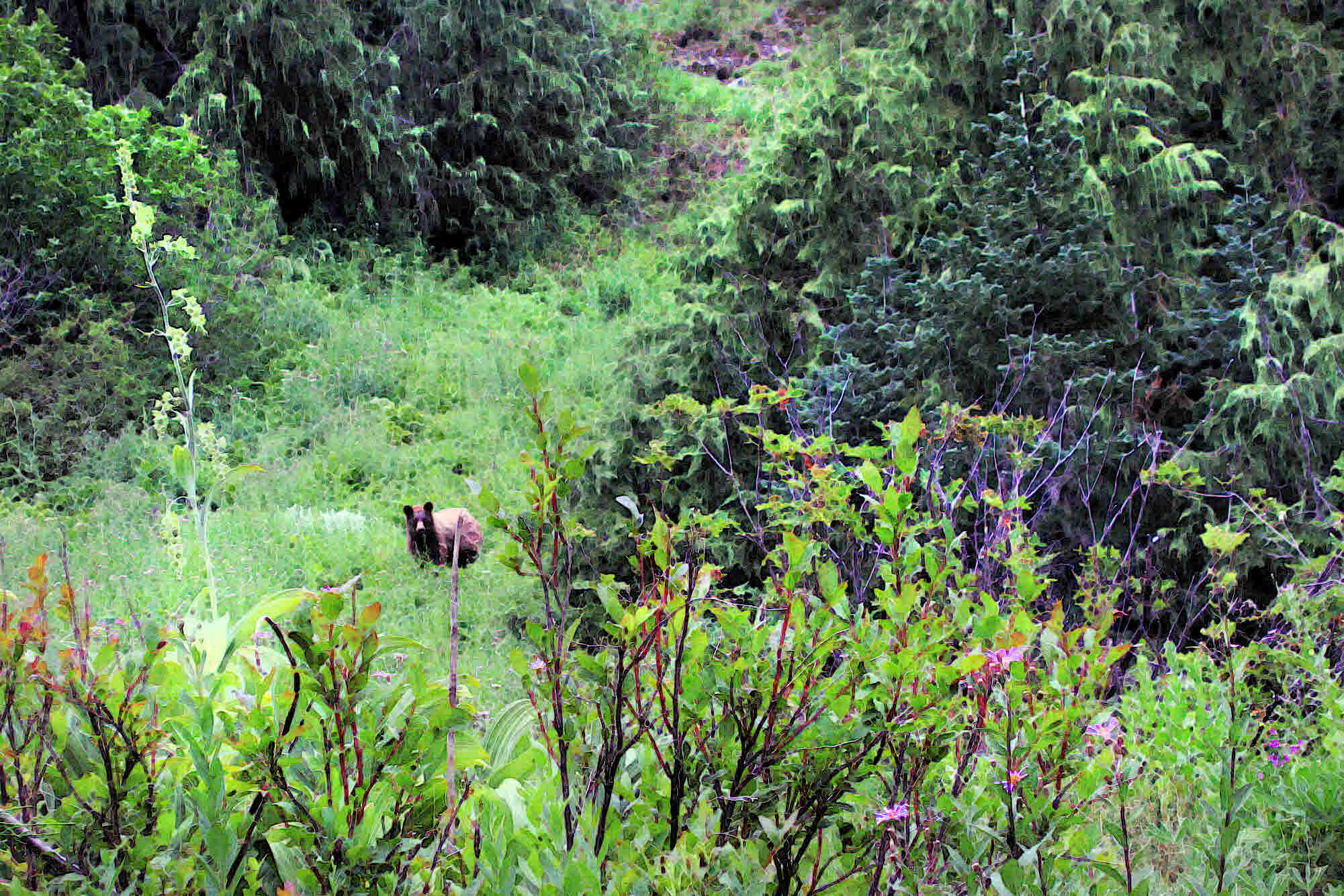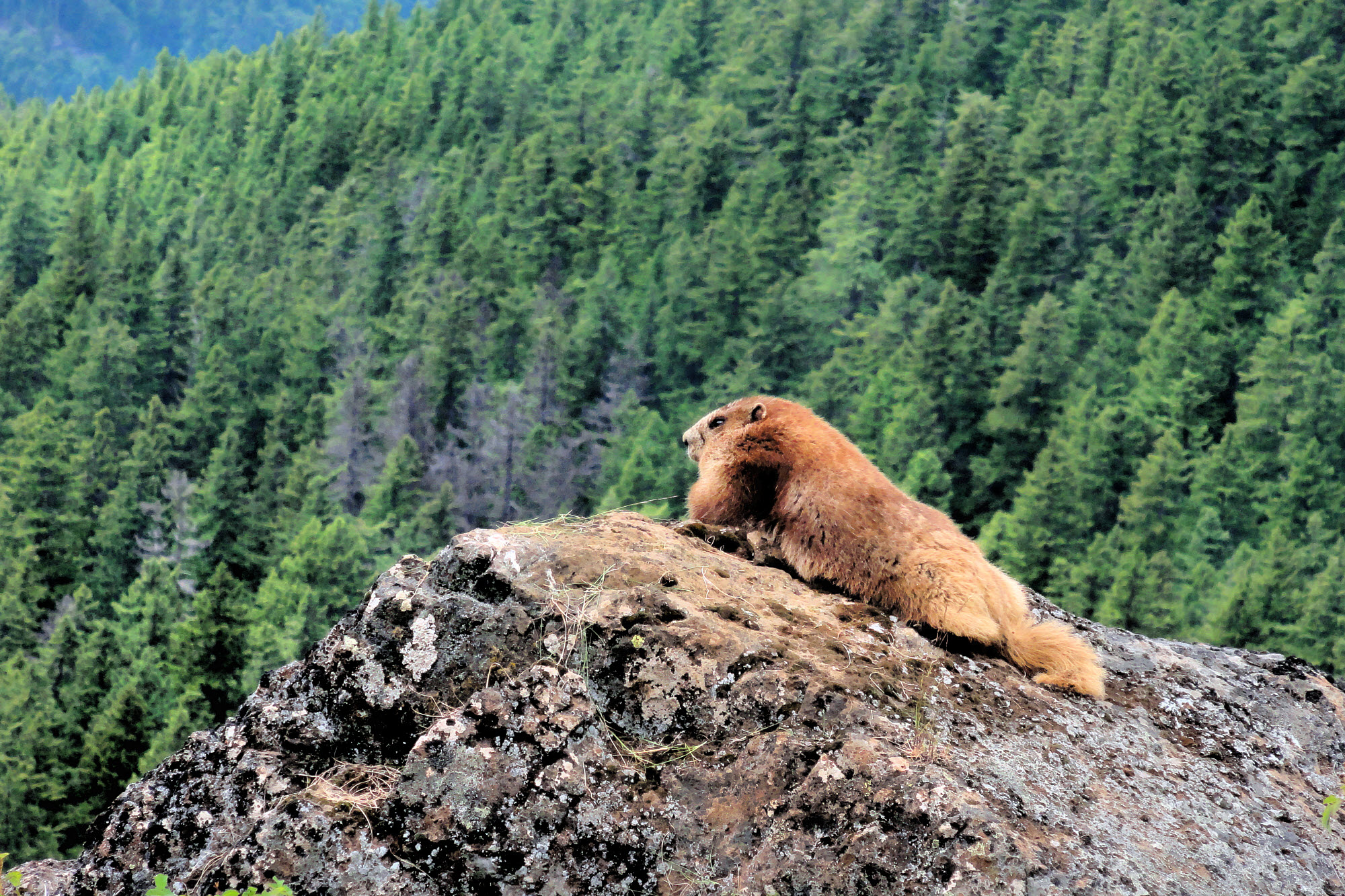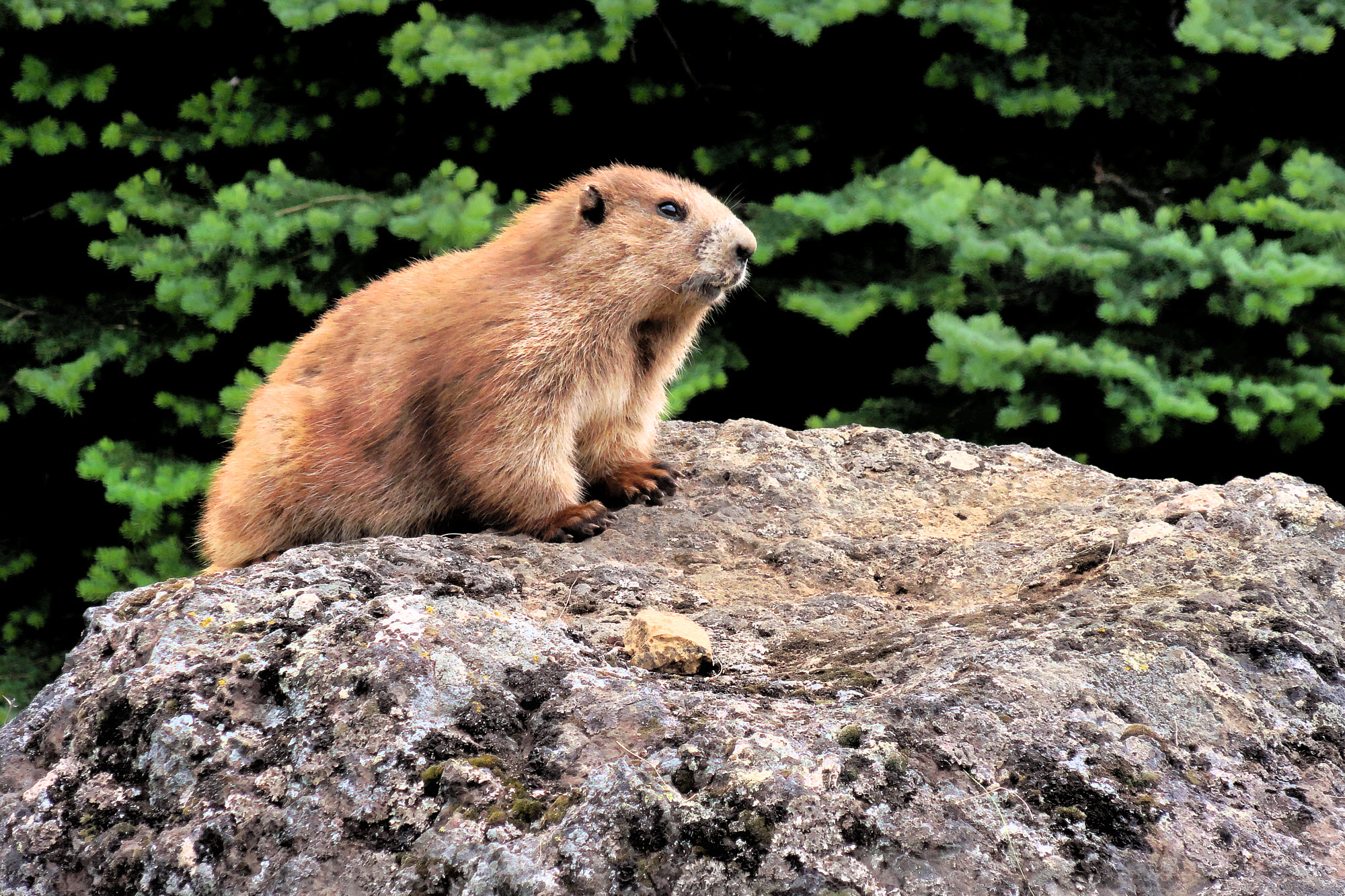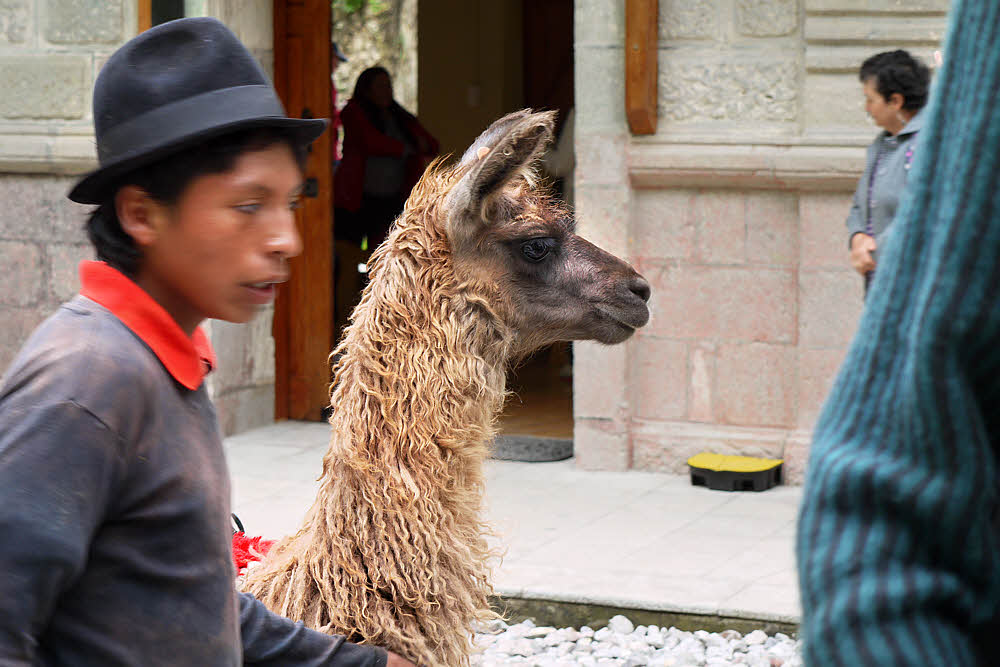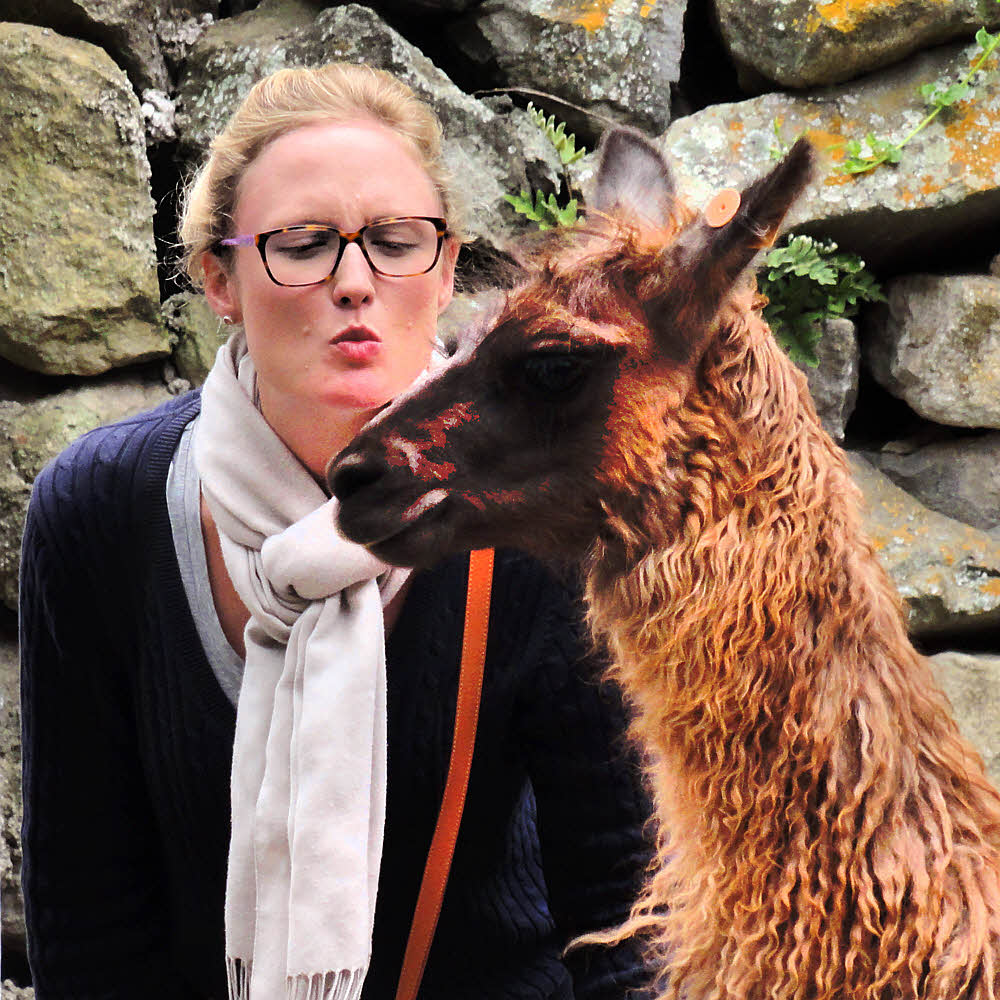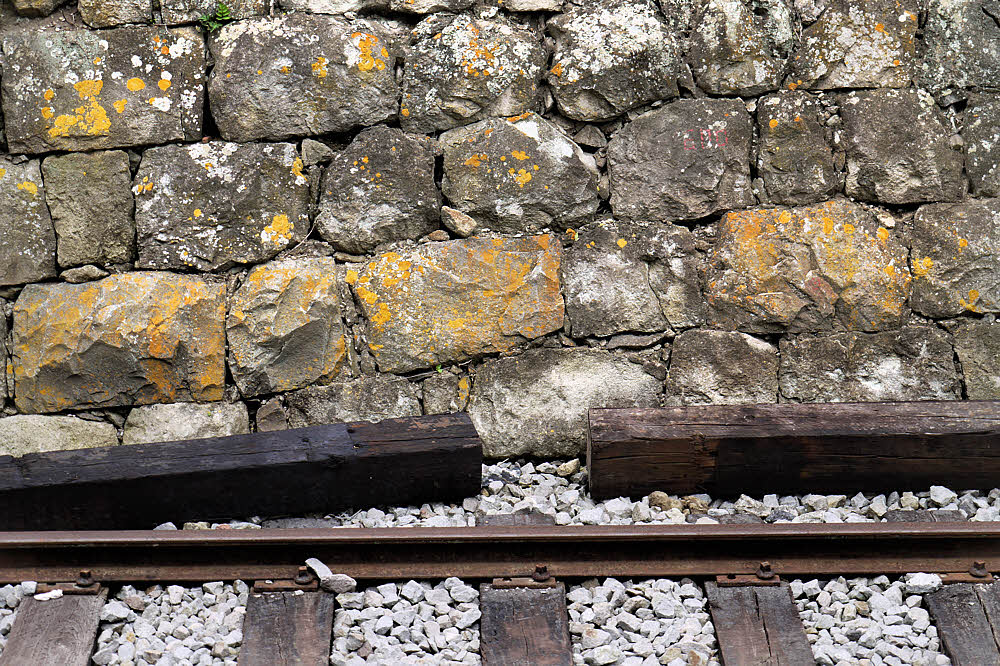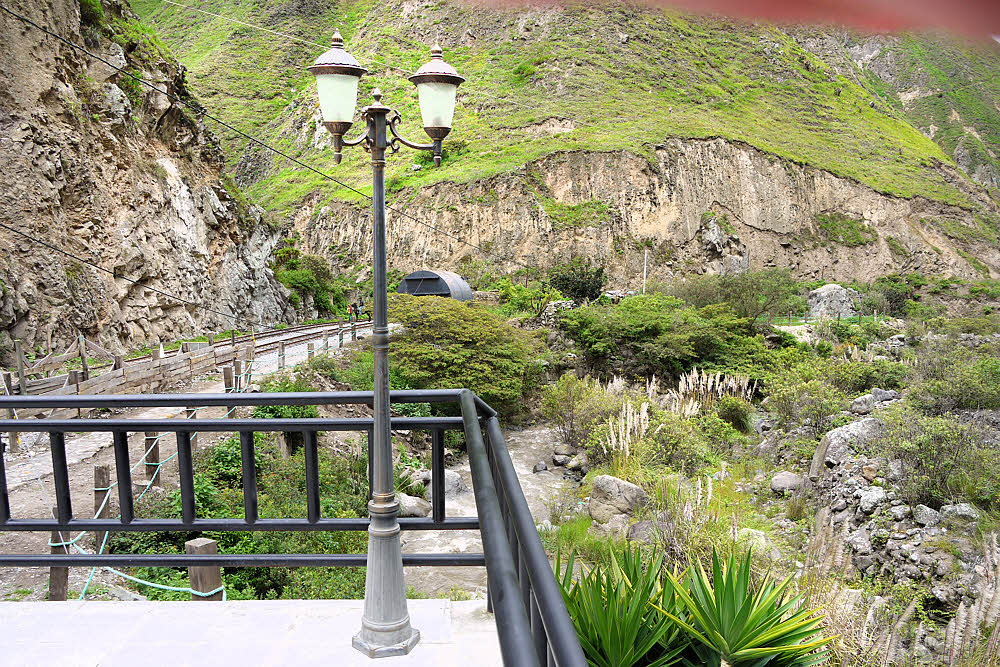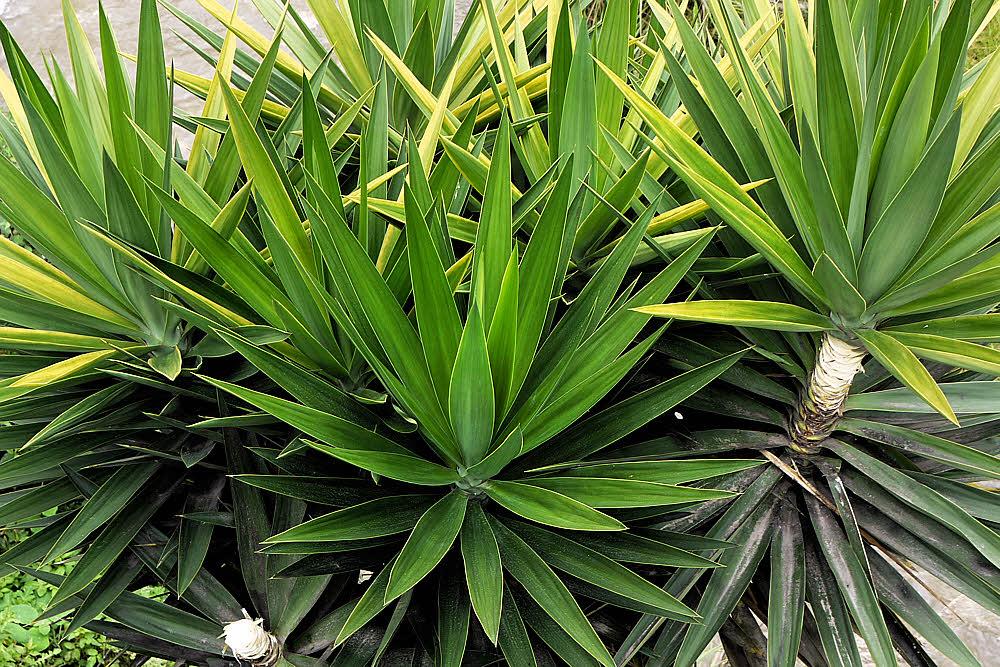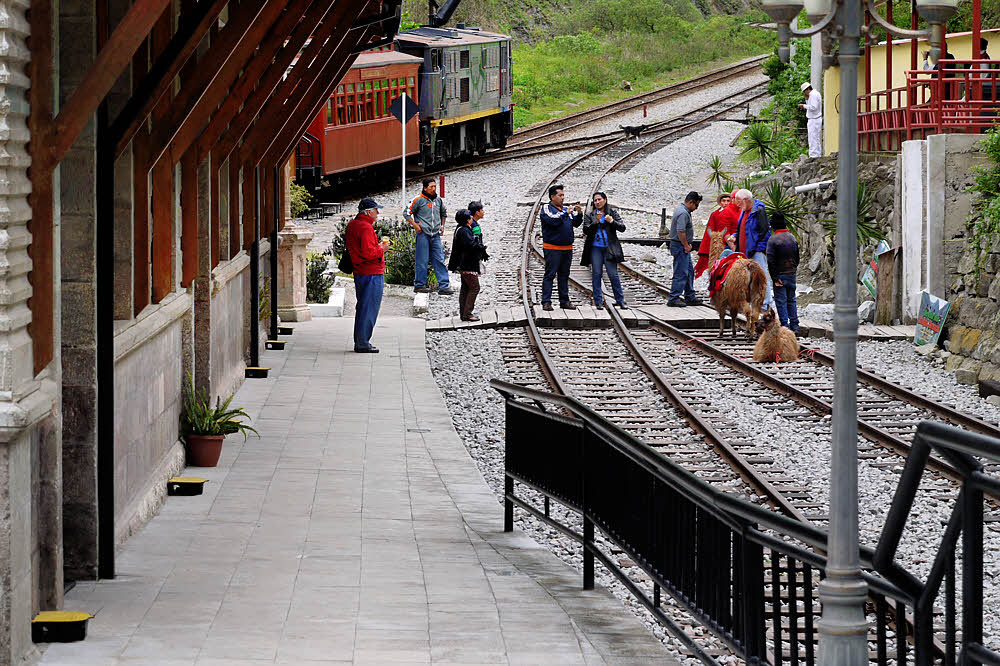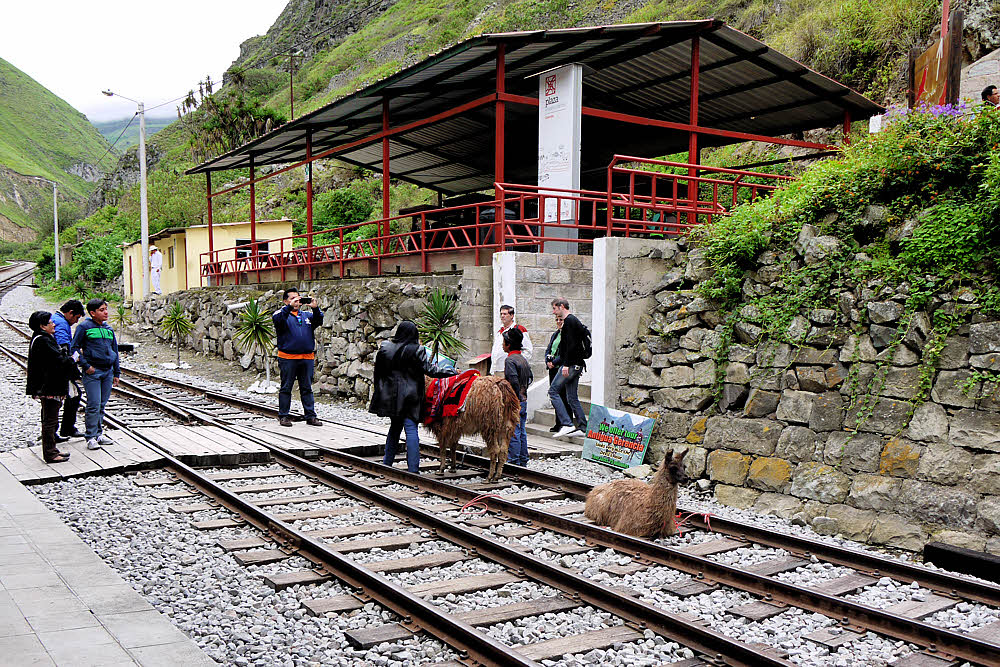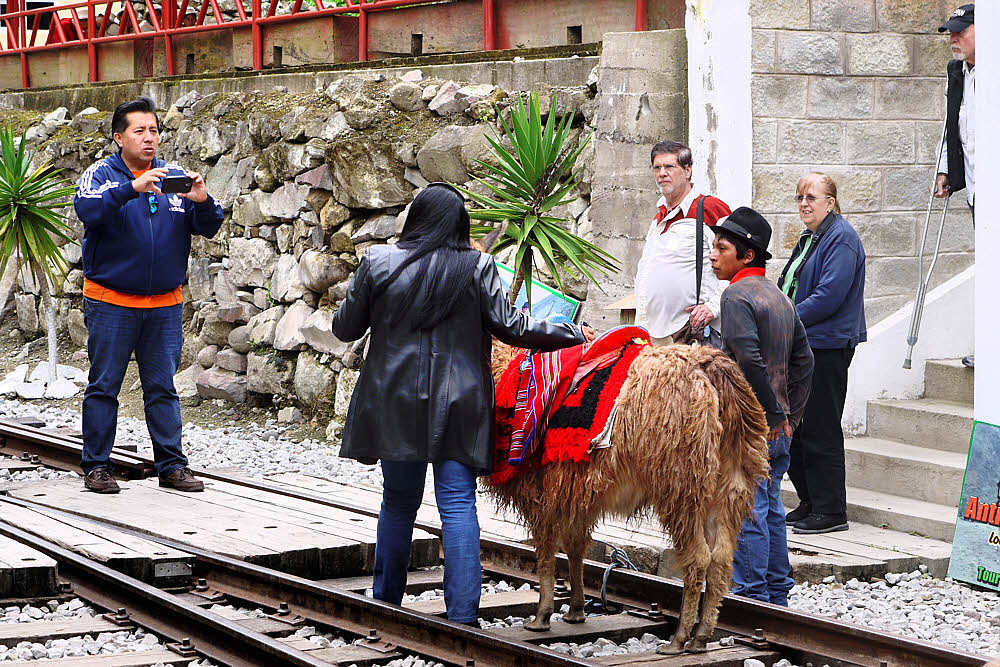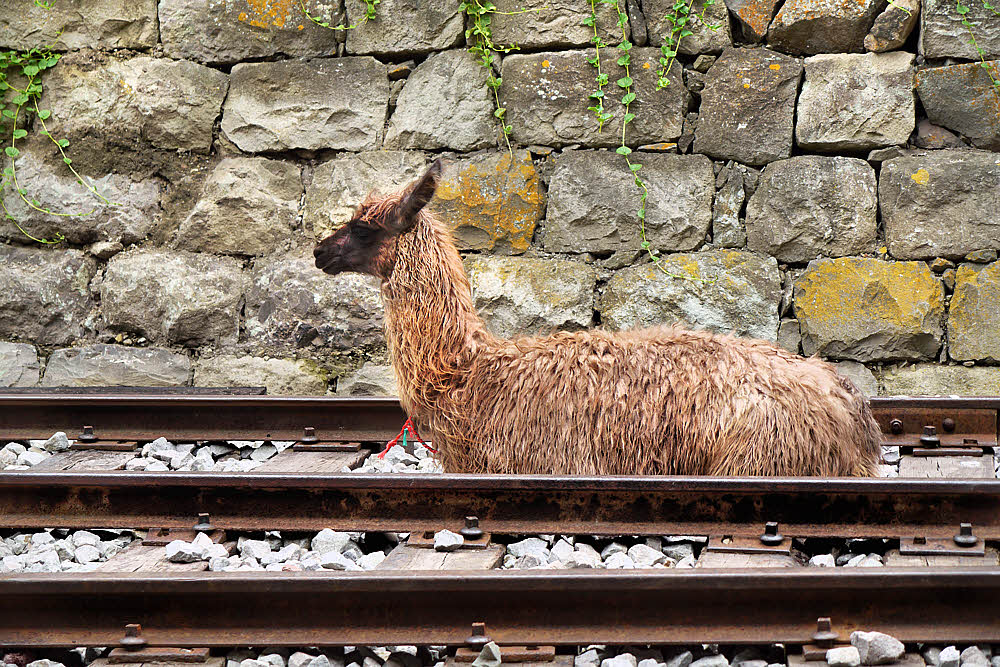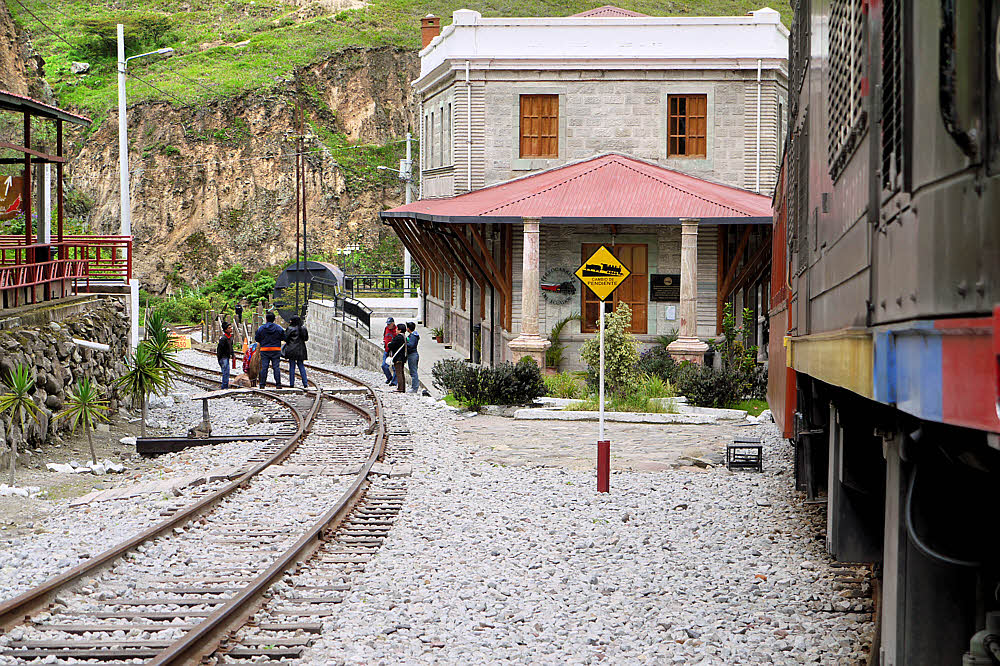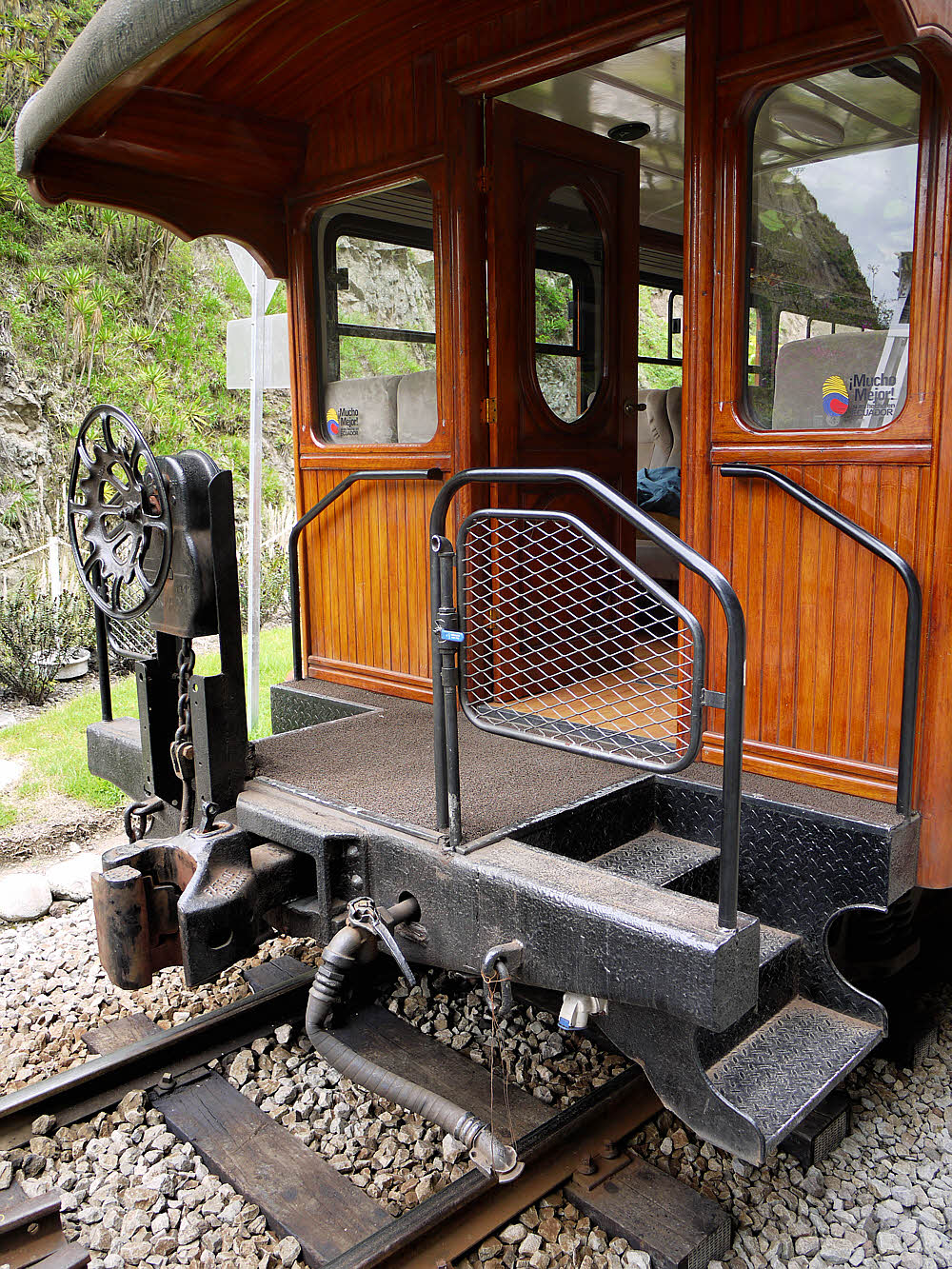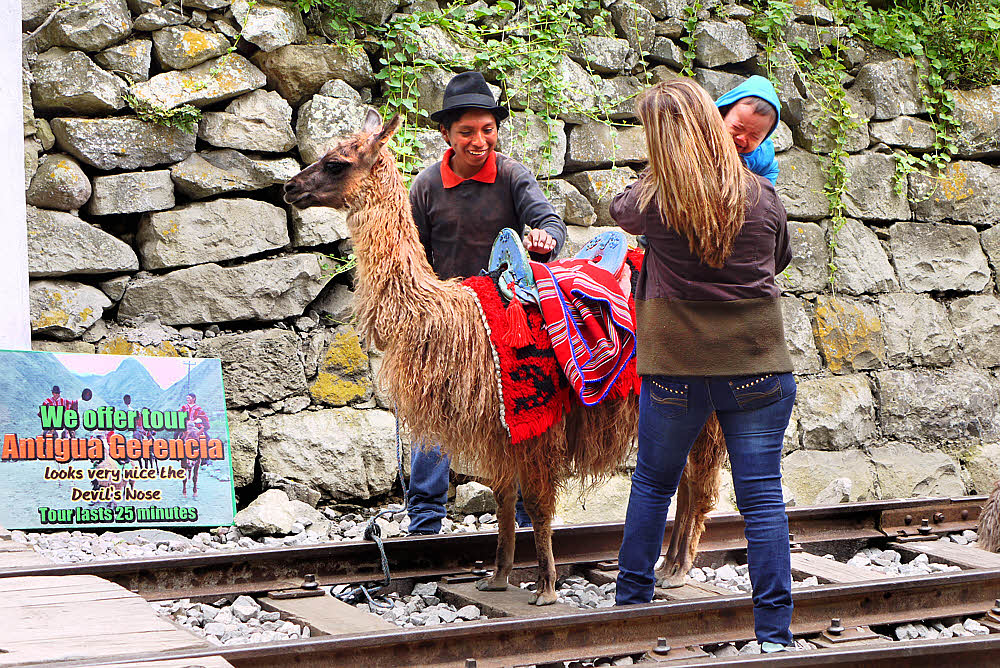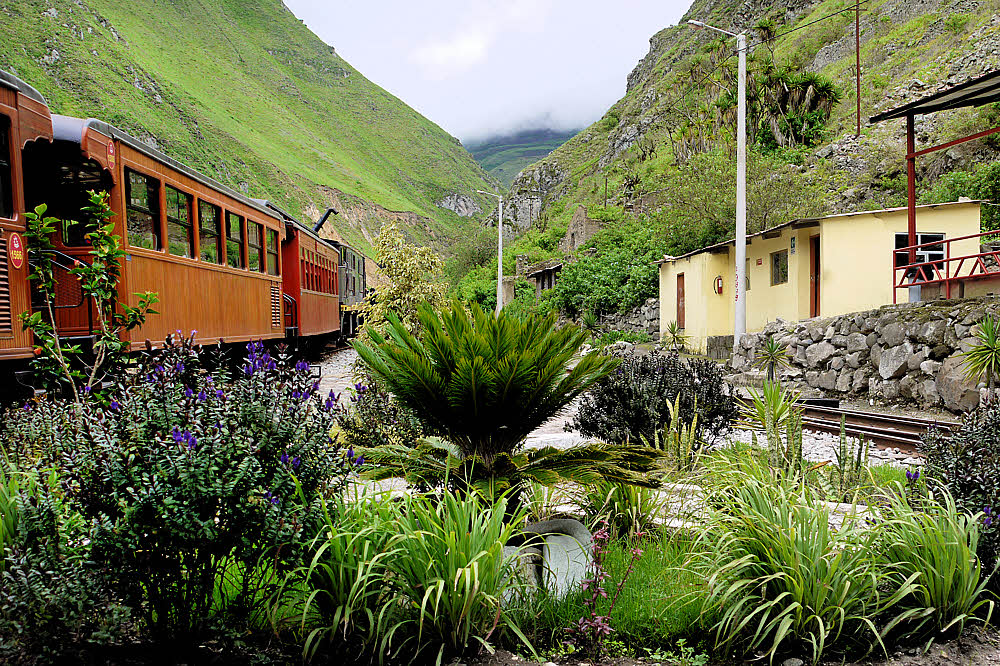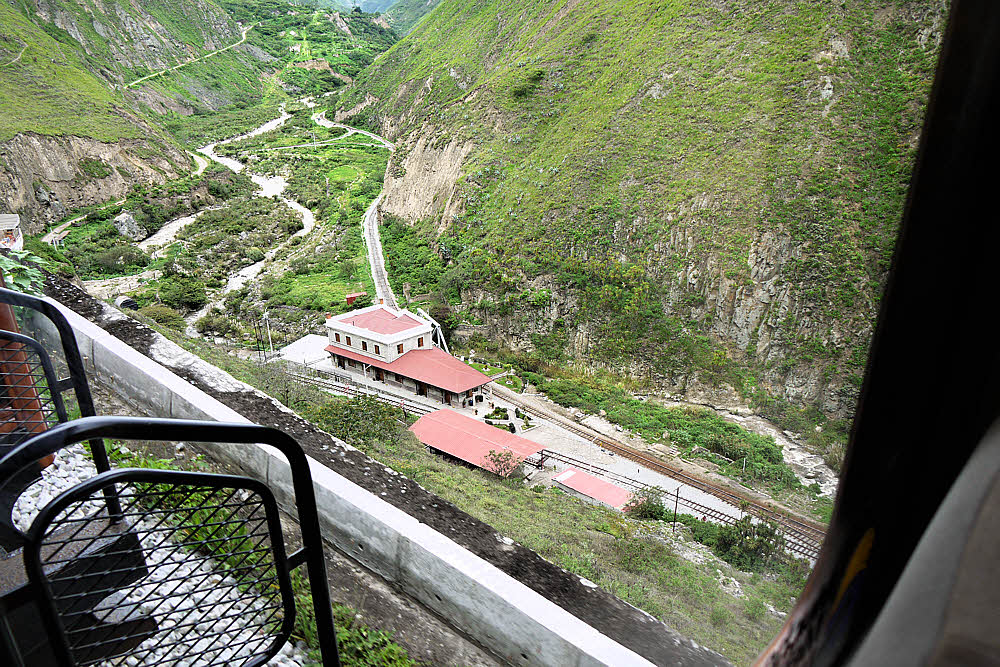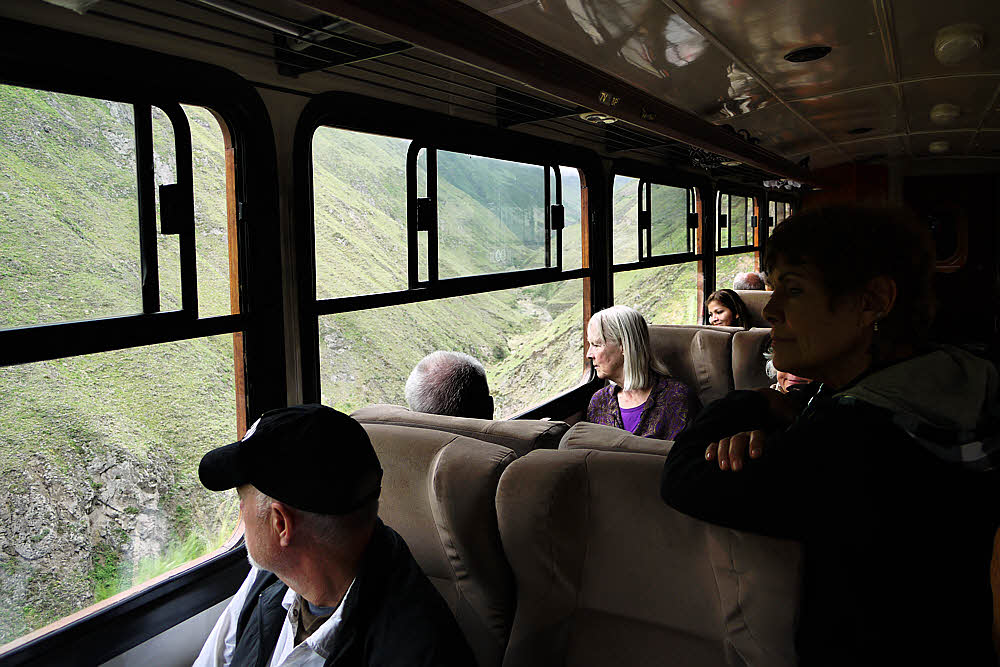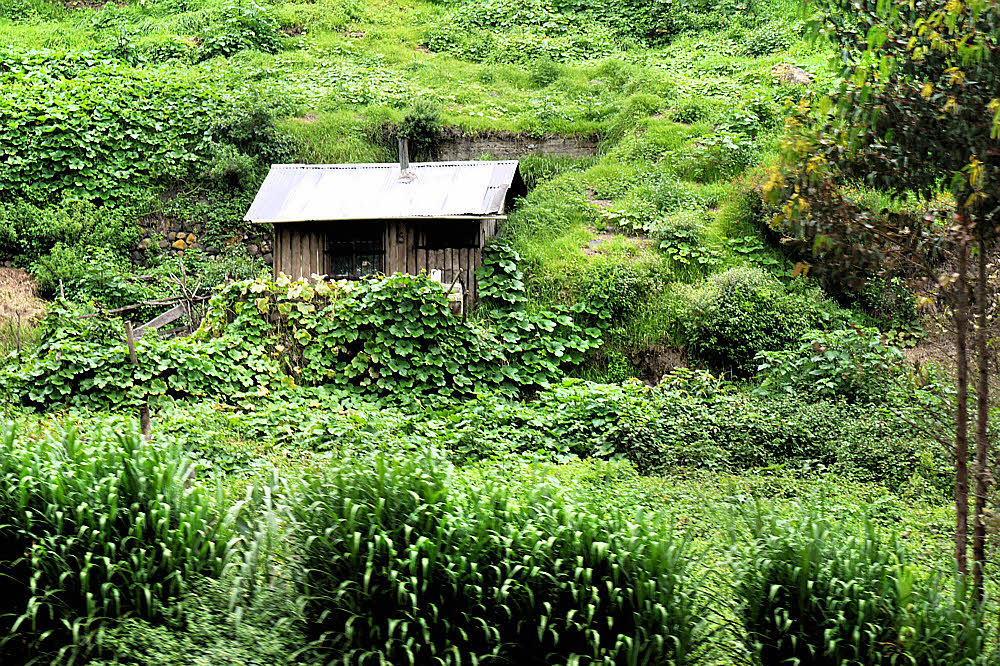Hiking in.
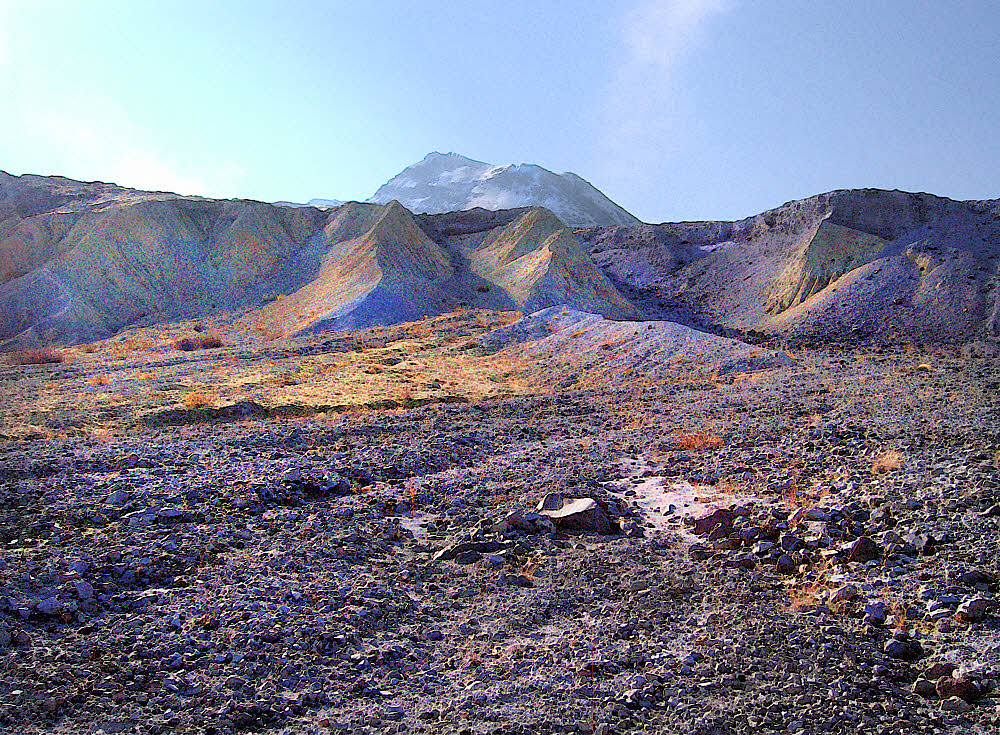
There, that's it, what I came to see.
I've been cleaning out my photos. I have a lot, and a lot to discard. Once I went digital they began piling up like drifts of snow, and many are as useful, so they have to go.
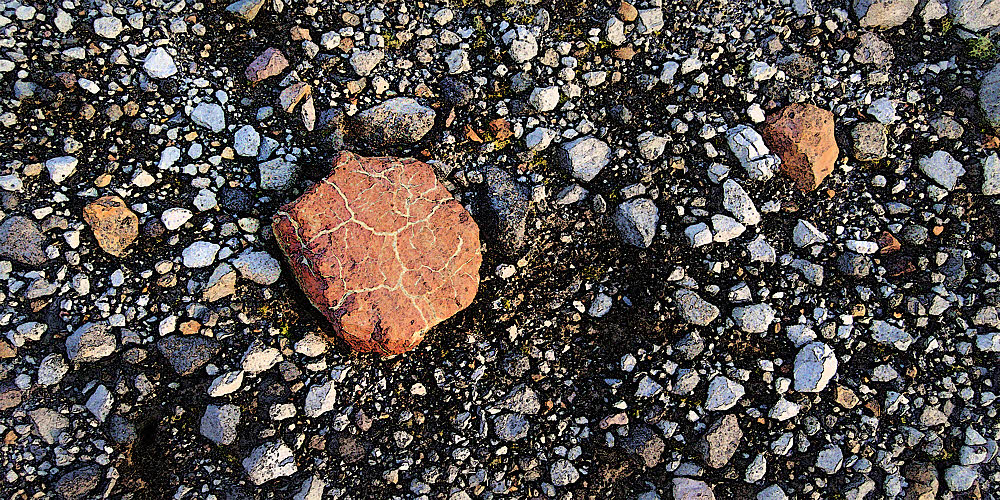
And standing there I look down. A message underfoot. I must understand this in order to know, but what, how? What is my lesson?
I'm keeping the interesting ones, at least those that interest me, and there is a temptation to post them, so I'm doing that.
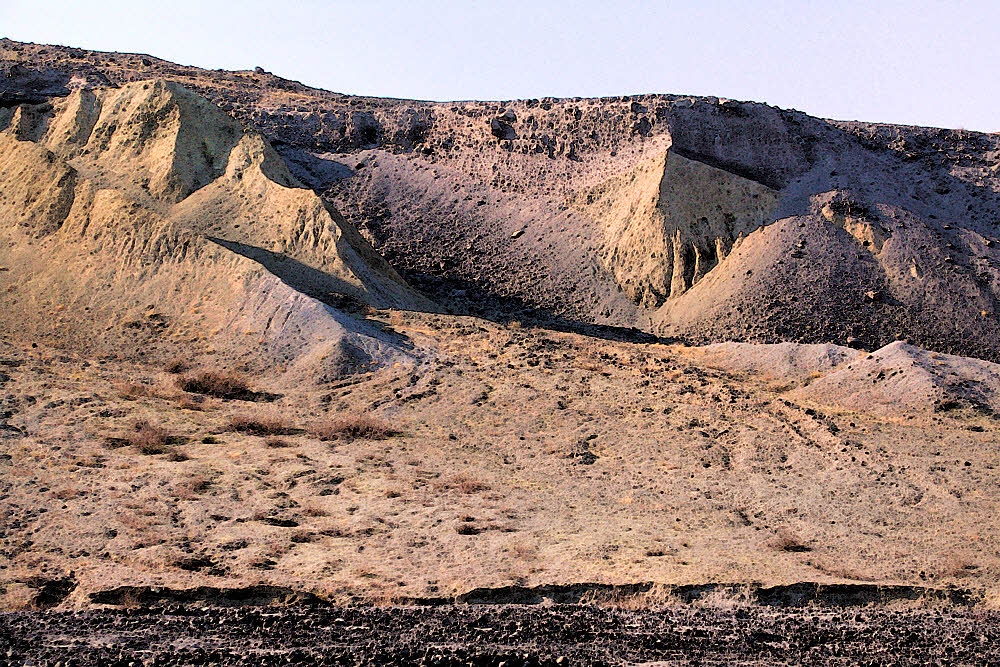
Moving west, crunching along, under the massive crater. To you it may look inhospitable. To me welcoming, like home, cliffs with their open arms.
So why not now?
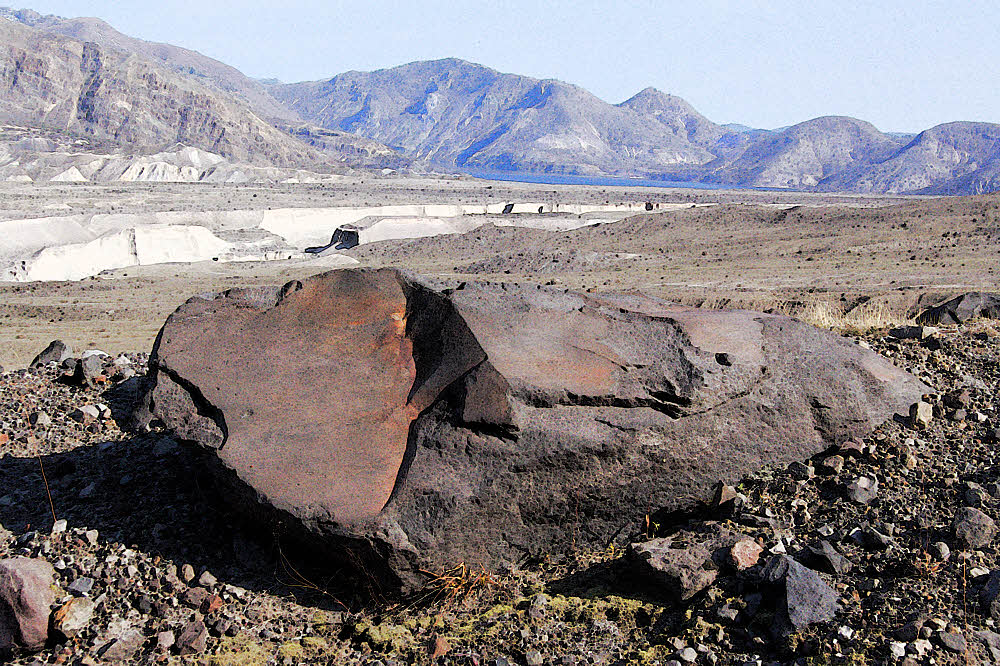
Turn around, and then... The lake, Spirit Lake. So impressive that I forgot to level the photo. Or it's a magic lake. Attracted by the mountain, tilted. Perhaps yes.
If not now, when? If not these, then which? Etc. See?
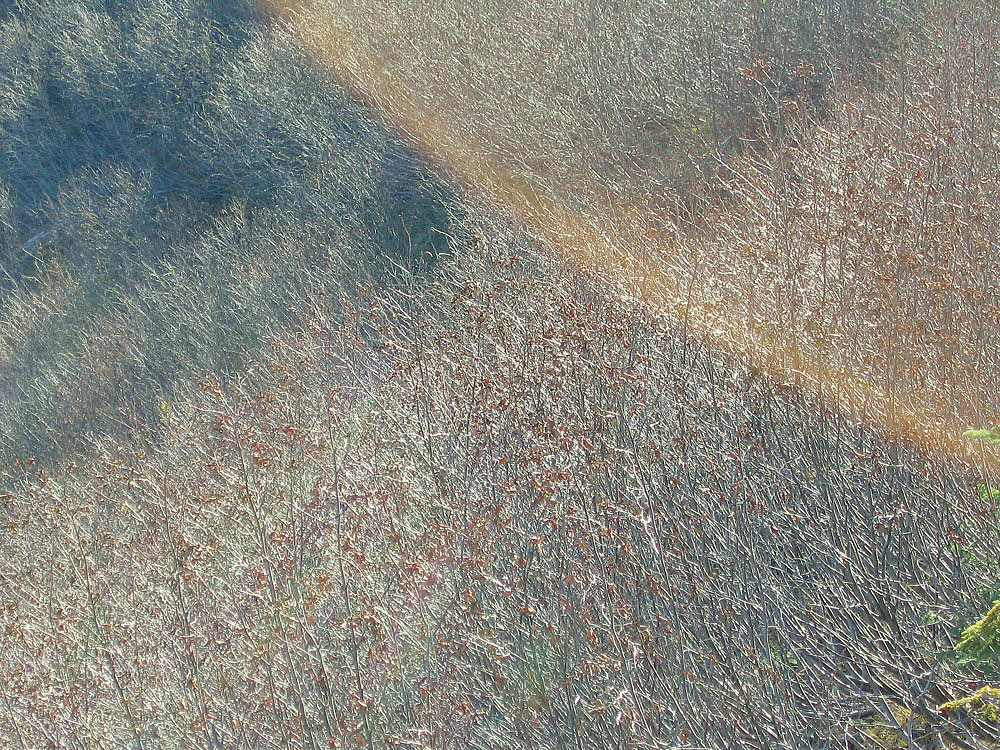
Brush and lens flare.
I had to unpack these images from Canon RAW files, which my long-discarded Canon PowerShot S50 produced. Surprising. Surprising quality, given all the camera's limitations.
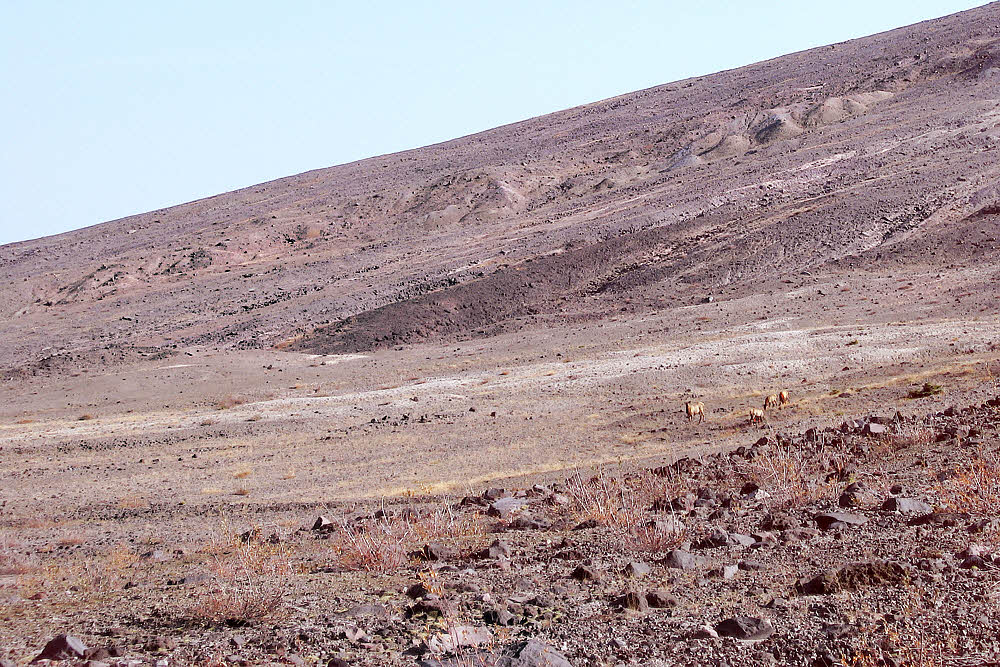
Witnesses. Fellow travelers. First encounter. We see each other.
The Canon dates from 2003, has a 1/1.8 CCD (7.2x5.3 mm), and would look silly if you set it into a bunch of today's cameras. It had a resolution of 2592x1944 and captures 5 megapixels of image data. The zoom range was 3x (in big-camera terms that was 35-105mm).
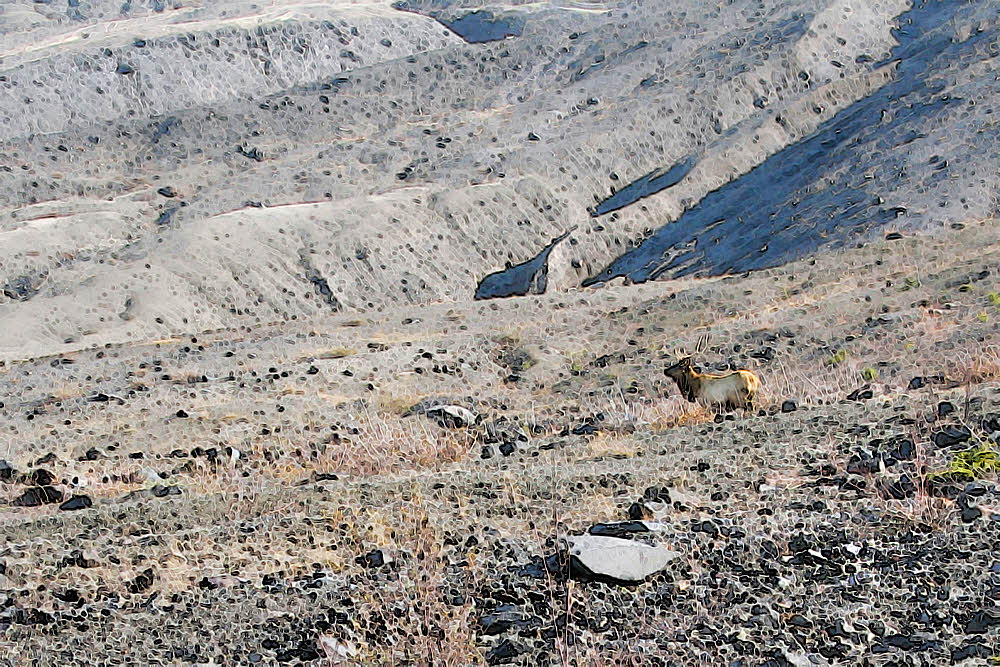
Some are large and confident.
The Sony has a 1/2.3 sensor (6.17x4.55 mm — slightly smaller), with a resolution of 5184x2920 at 21 megapixels, and a 30x optical zoom — in big-camera terms that's 24-720 mm, and it helps a lot. Files, though, are only hard-baked JPEGs. No RAW option.
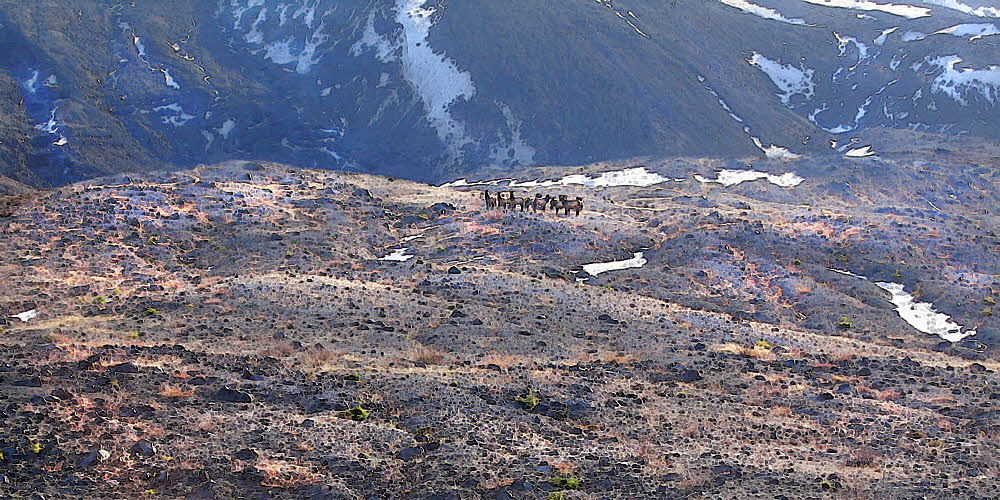
Some prefer to ruminate at a distance.
Although the Canon is older, with much less resolution, its sensor is 1.4 times bigger than the Sony's, and there is that RAW option. It shows. This was really a great camera for its time, and its quality is still evident. Not too shabby, even after 14 years of technological improvement that it doesn't have.
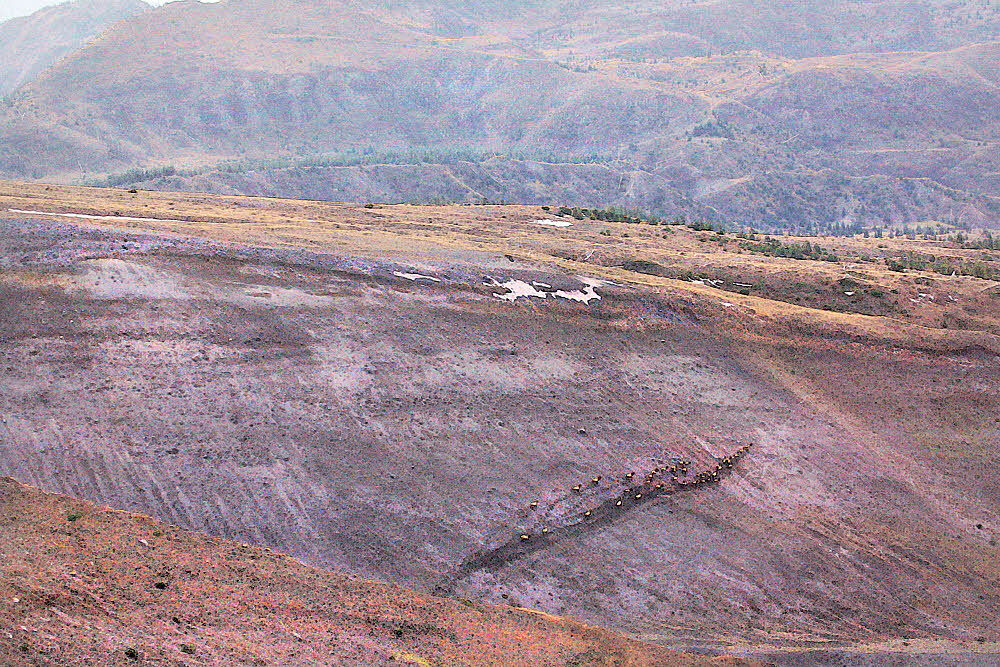
And others group and move in long columns toward more lonesome locations.
But most of image quality is what the user does. Even 44 years after I got my first real camera, I'm still making beginner's mistakes, though slightly fewer as time goes by, but I did this hike in 2007, so excuses. There are always more — I has 'em.
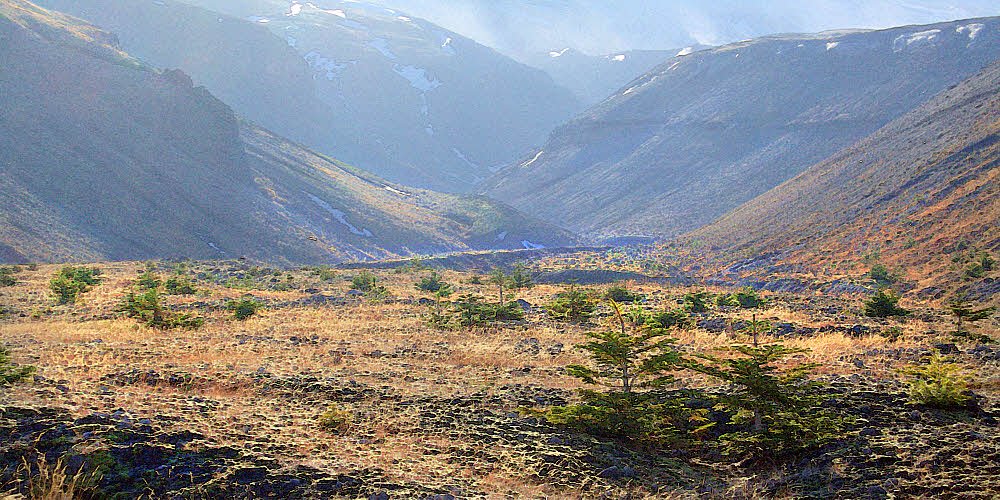
Then, after half a day of walking, I turned back, and spent more time talking to the mountain.
So about halfway through the editing I got tired, got desperate, tried going impressionistic, and decided to start over and go with that, because easier, because I can say I intended that all along. Nurk.
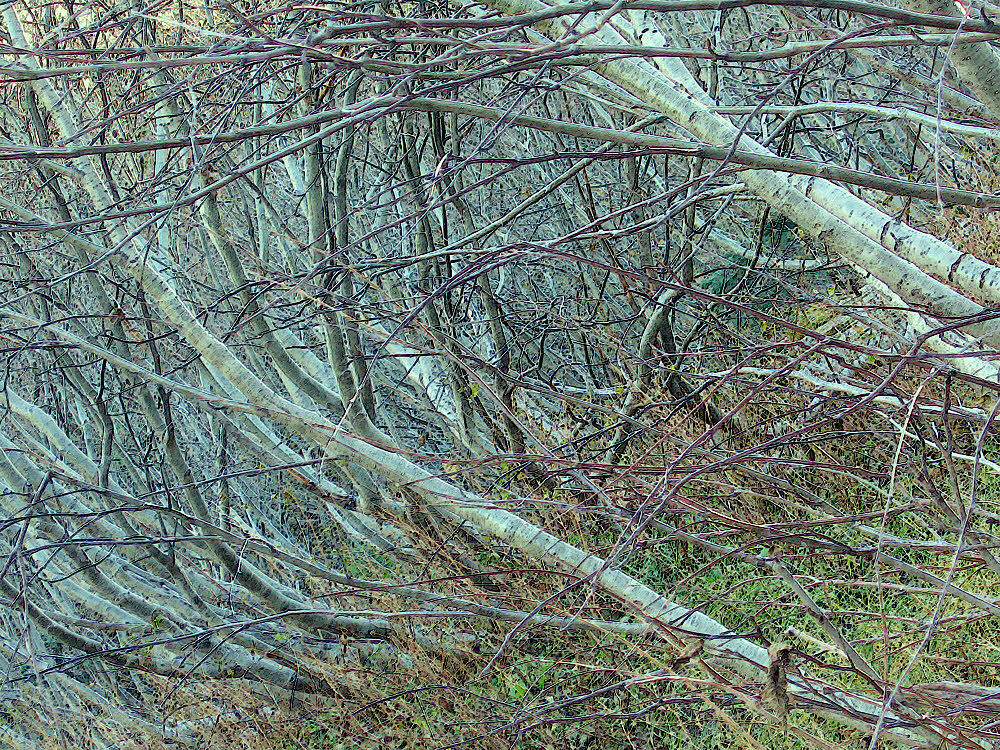
First the willow thickets.
Still not great, but my crappy technique sort of looks not terrible and kind of artistically creative if you close one eye, squint, and turn your head sideways, and are feeling generous.
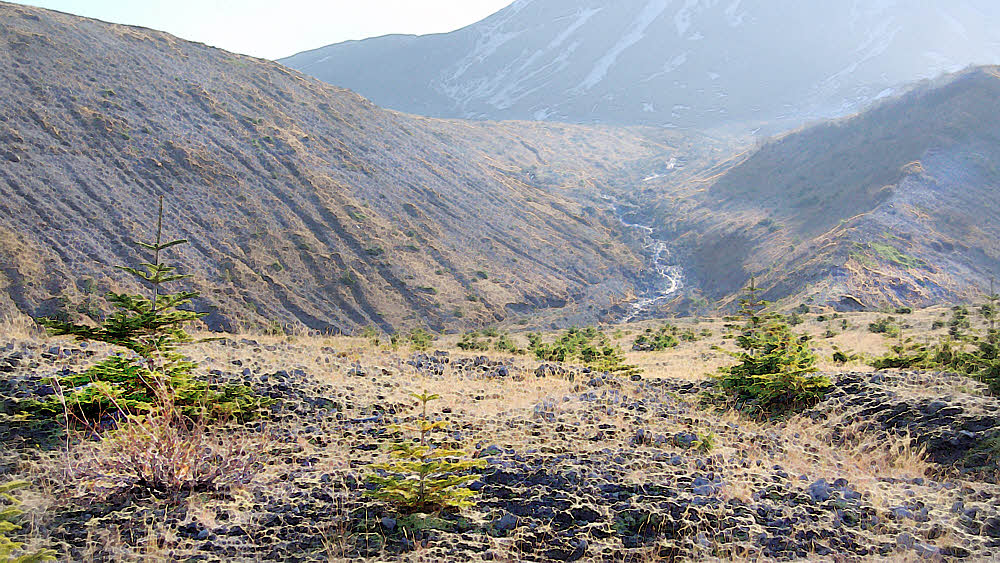
Then more landscape.
But really, it's the subject here.
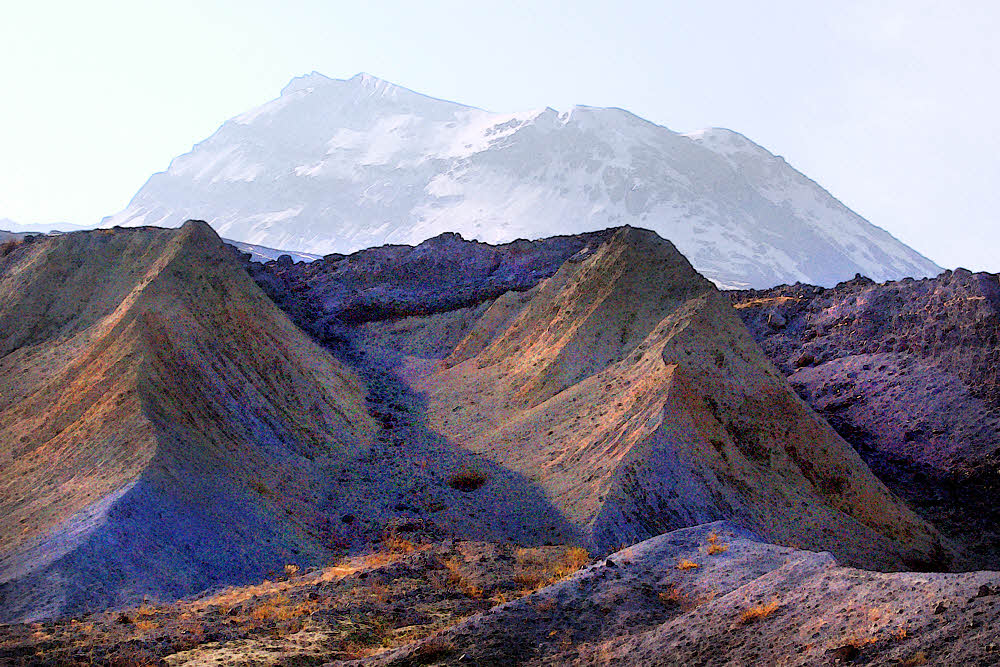
And finally find myself under the cinder cone again.
It was a great day late in the year, I was out all alone on the north side of Mt St Helens, and the elk were in force. September and October in Western Washington can be great. On a good year the winter rains don't start until the third week of October. Some years they come in September. One year I will never forget had good weather into the middle of November, and I was smart enough to make use of it.
Hiking out.
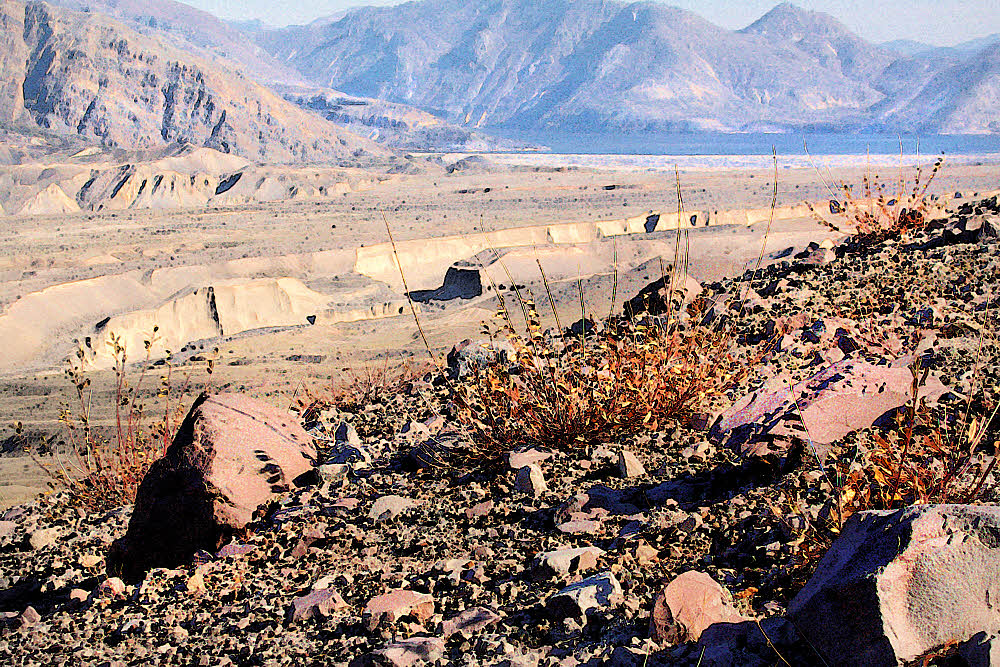
You'd think that backtracking and hiking out would be an unwinding of the inbound route, and it was, but revealed different perspectives.
This year, 2007, I was out on October 28, right on the edge.

The mountain still makes it clear where the weight is, who has the mass, and where to find the rulebook.
Coming in from the Johnston Ridge Observatory, the tourist route, I was safe from hunters. Hunting season may not have opened yet, but if it had, few if any hunters would have been in the area. It's my opinion, based on what I've seen of hunters, that most don't know what they're doing, and look for game where it isn't.
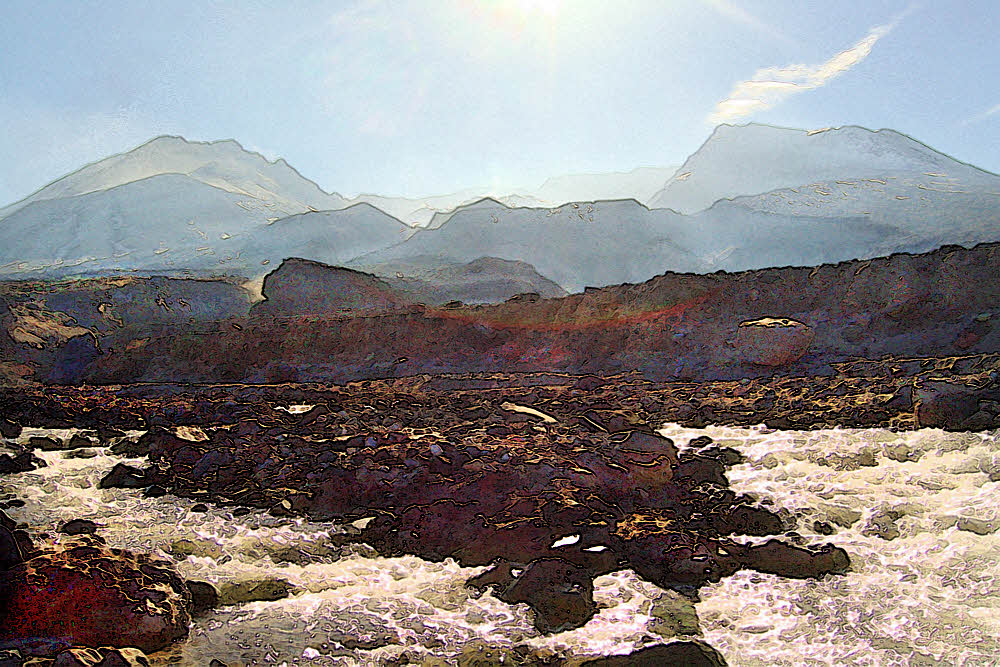
Loowit Creek — never happy. Never sad either. Never nothing it ain't, but splashy, and no nonsense.
I've seen hundreds of elk at St Helens, and they don't hang out around parking lots or on the trails within half a mile of those parking lots, which is where the hunters look. Elk are in the brushy draws and creek beds around the edges of the mountain, and, at times, on the open plains which were once, long ago, blasted clean of all life and are now furred-over with tufted grasses.
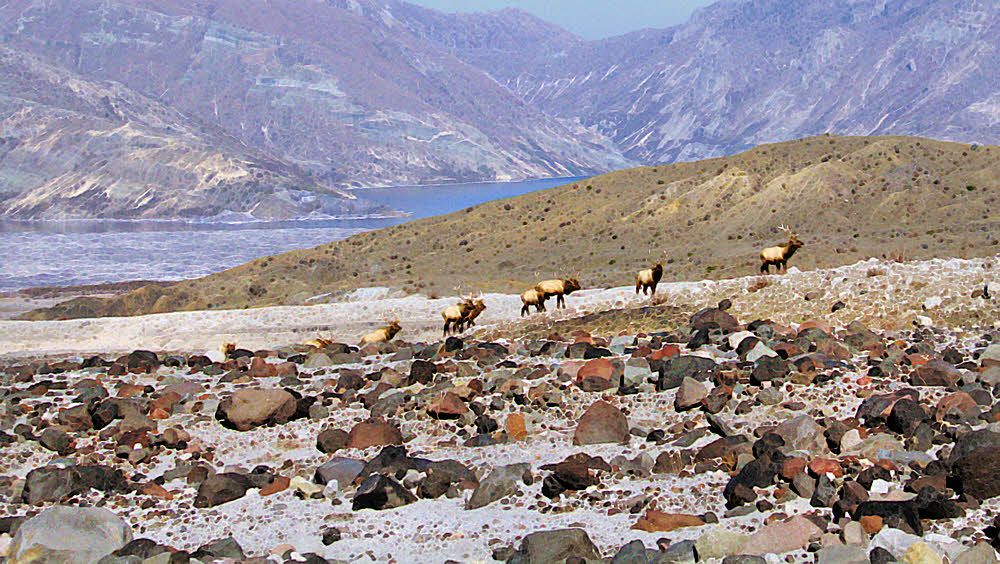
In back again, Spirit Lake with its floating logs. In front, elk. In case you weren't sure. I'm sure. Trust me. Elk.
This open land was where I found them that October day.
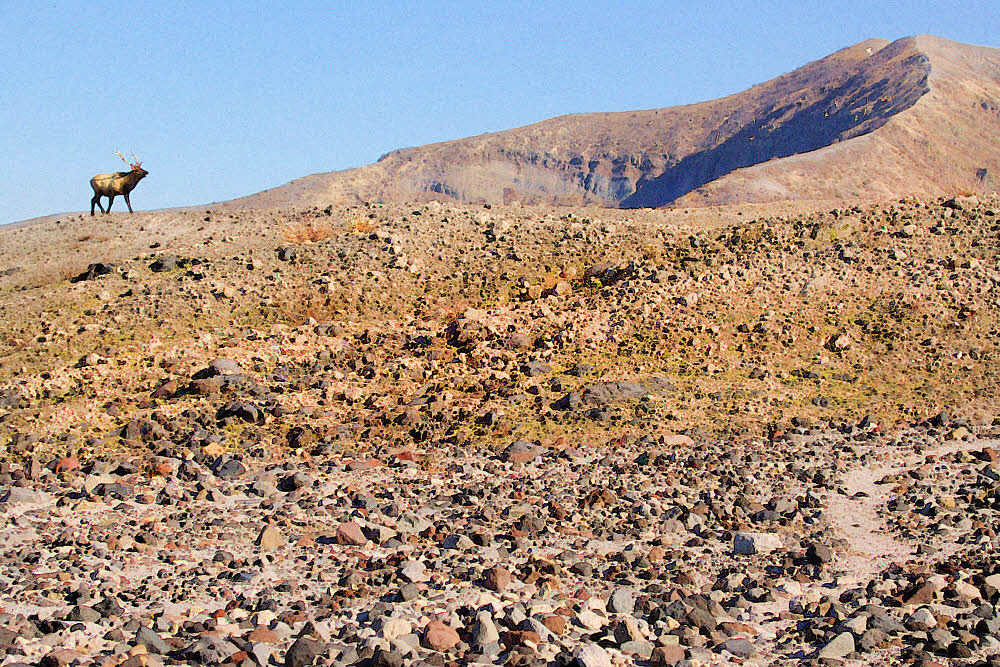
Some quite big, going somewhere in the usual big way.
They were wary, but less so than usual, and I am small and quiet. On a normal summer day, seeing elk here, in the blast zone, on the pumice plain, means catching sight of three or four, or half a dozen, at distance, and briefly. They are skittish. They vanish, leaving only scuffs of dust to dissipate with the breeze. A quarter-mile is a close approach. Four hundred forty yards, 402m. At best.
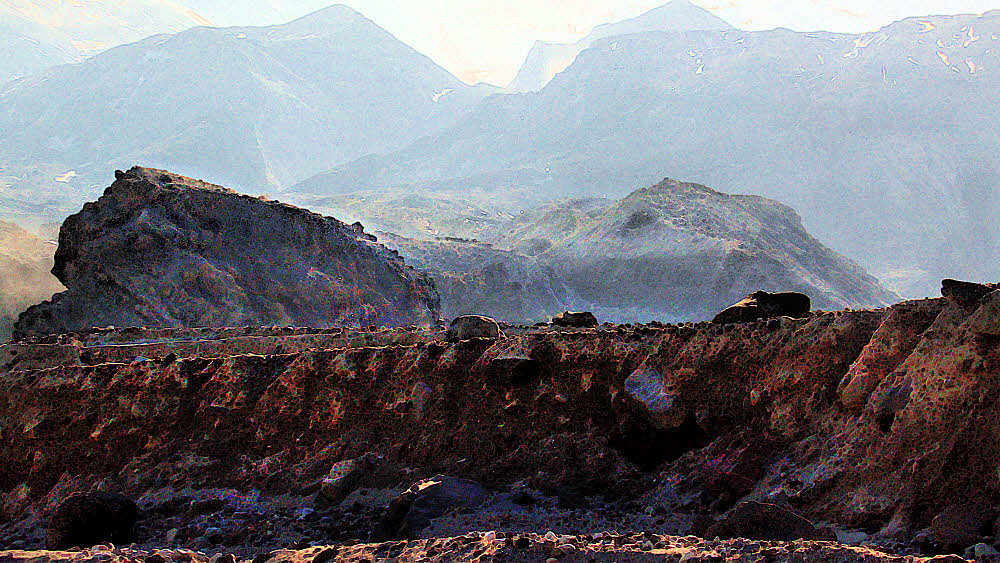
But back at Loowit Creek, more of the same, with added emphasis, under the volcano's rough northern edge.
This day, though, they were out in force. Mating season, or a parade, a party, or just wandering around for the hell of it. Safety in numbers it seemed, because though I did not in any way get close, still, they were closer than usual, and there were dozens of them, and I was there stumbling around with my pocket camera, which I filled with photos.
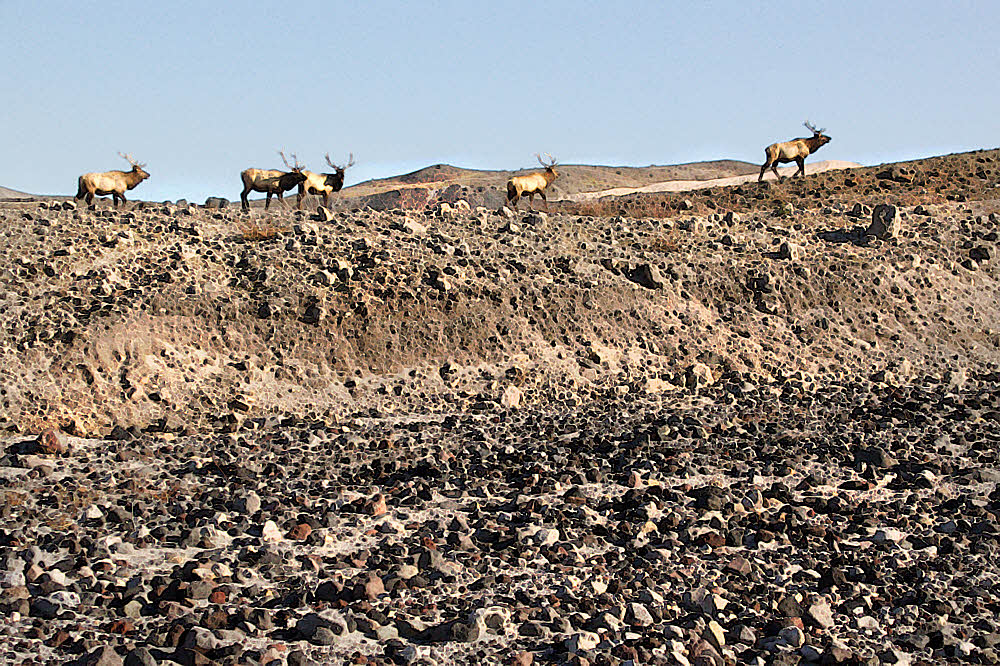
And though it wasn't true, from photos like these you'd assume that I was rubbing haunches with beasts. Not quite. Not nearly quite, but close enough to be inspiring.
Now, 10 years later, I'm editing and posting those photos, in an impressionistic way, to bring back the sense of what I felt that day because if I don't do it now, I may not ever.
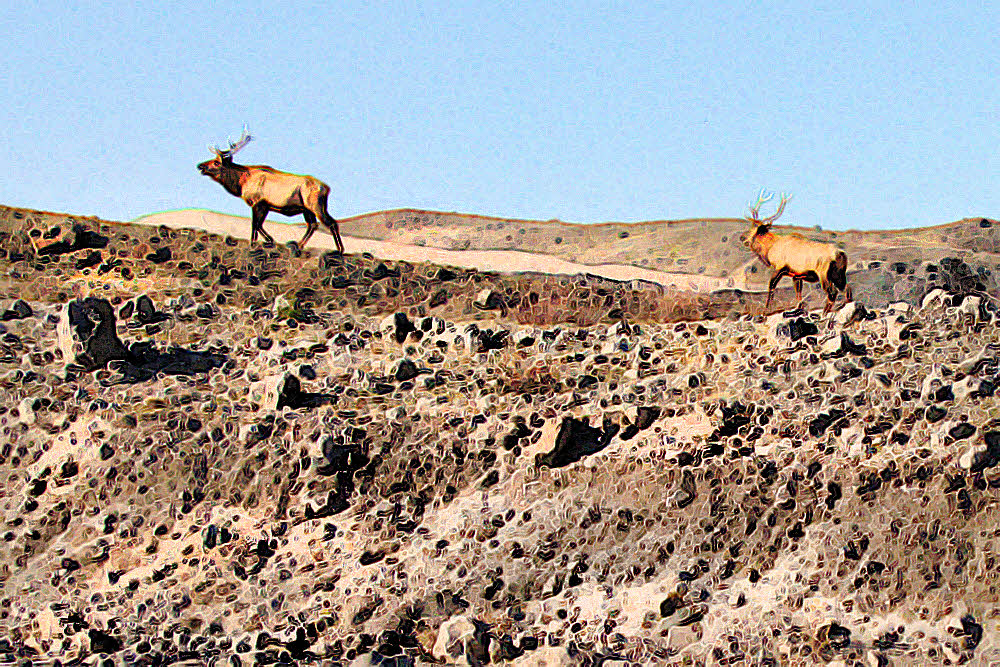
Detail with antlers "perhaps from Gallo-Roman cornu antoculare 'horn in front of the eyes,' from Latin ante 'before' (ant- 'front, forehead,' with derivatives meaning 'in front of, before') + ocularis 'of the eyes' (from Latin oculus 'an eye,' from PIE root *okw- 'to see')...compare German Augensprossen 'antlers,' literally 'eye-sprouts...'" Or so speculates the Online Etymology Dictionary. Intimidating tools at any rate.
With luck, I'll be back there next year and will see what I can see. We'll see.
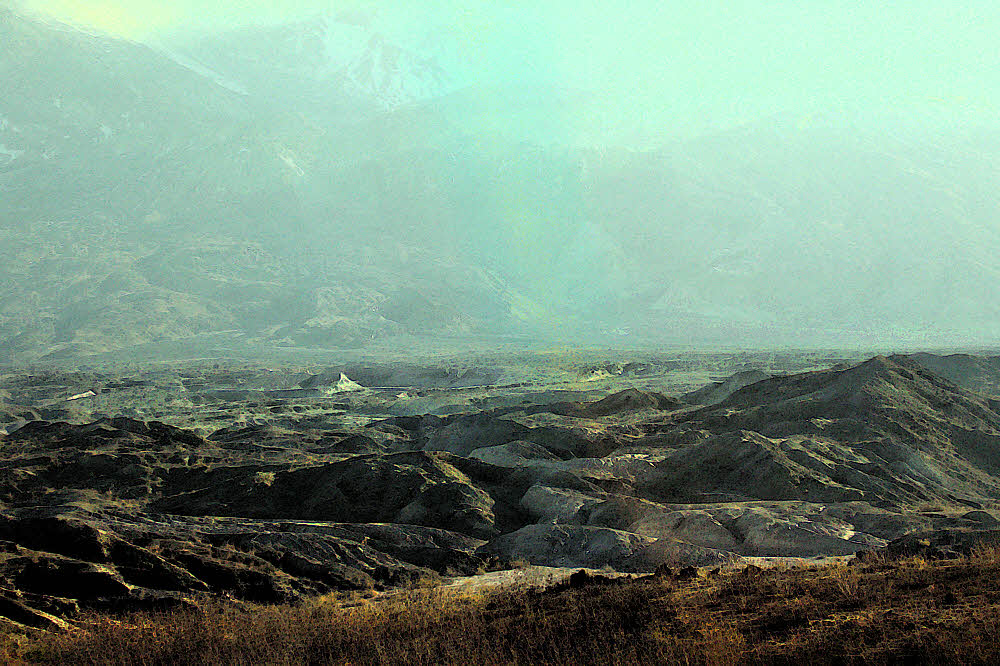
Broken late afternoon country. Where I walked. Scary-looking.
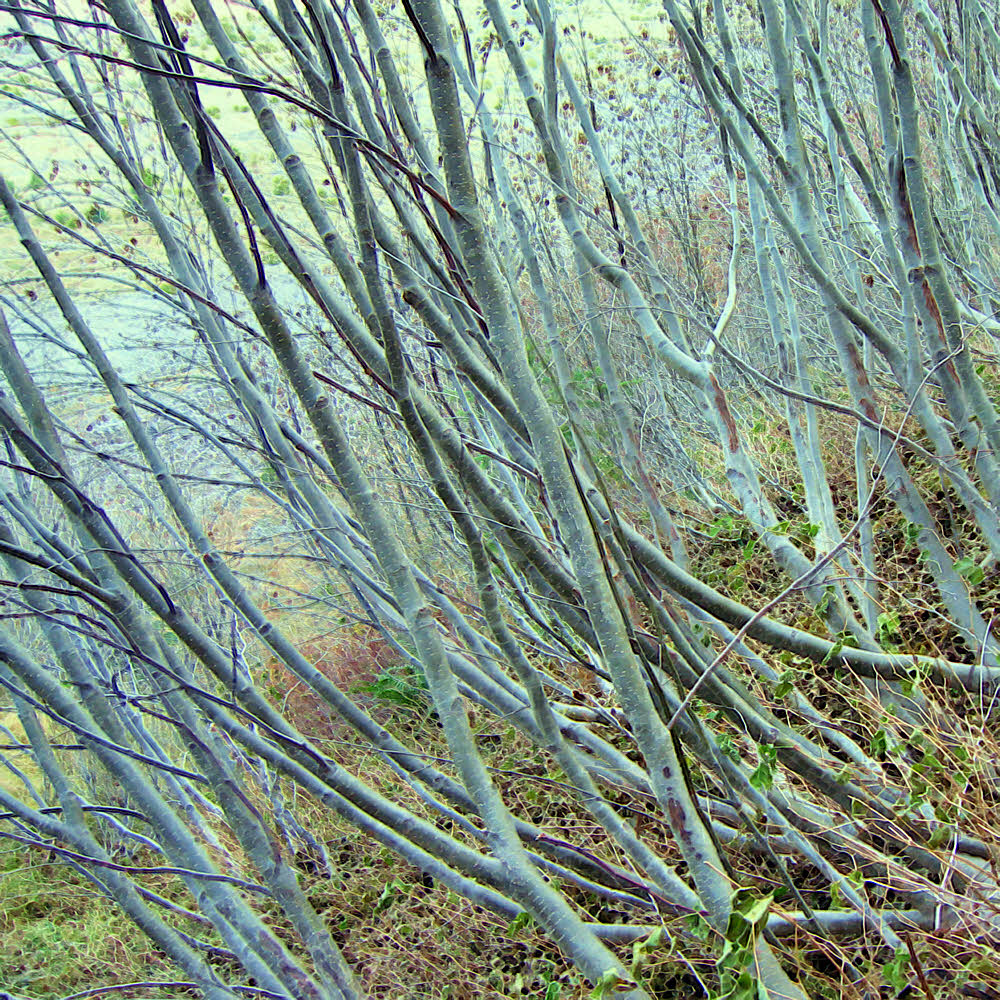
But willows are always happy and not scary-looking.
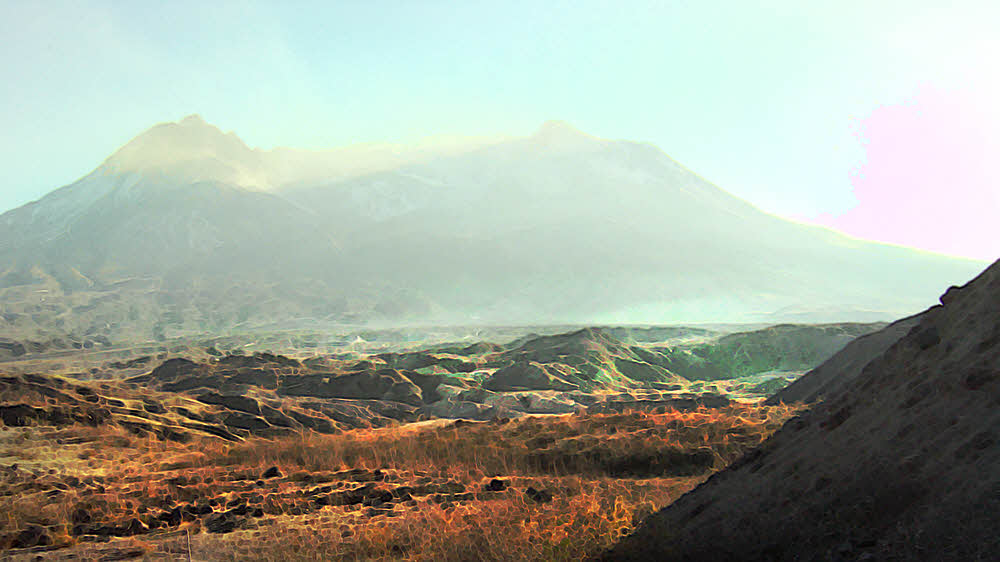
Stand back, stand off, add some space, and the view broadens once again.
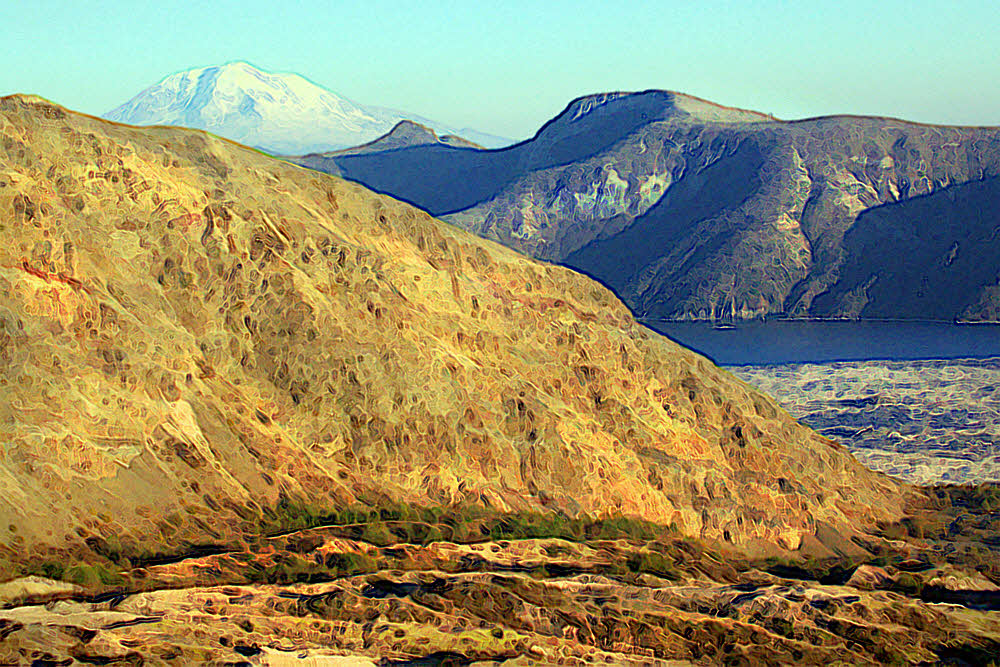
With altitude, Spirit Lake reveals some depth. Mt Adams sends a greeting.
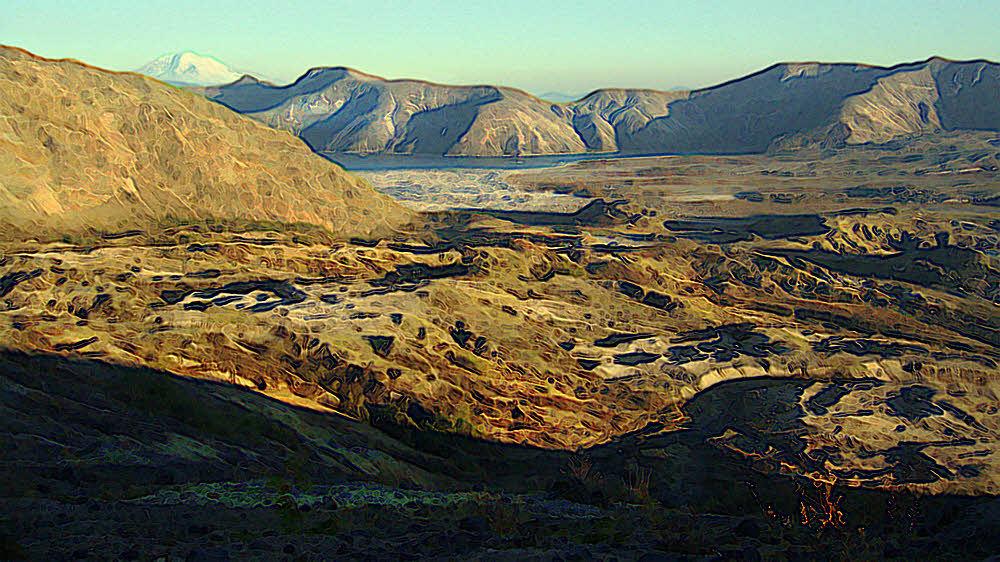
Gain more altitude, stand farther back, take the time to look and you get a better idea of how the world is laid out. Mt Adams remains in charge of the far distance.
Extra info.
Washington State Elk Herd Plan: Mount St. Helens Elk Herd
Elk Viewing — at Mount St. Helens
Mt. St. Helens Elk Herd
Study: Mount St. Helens elk herd reduction accomplished
Mount St. Helens (Wikipedia)


